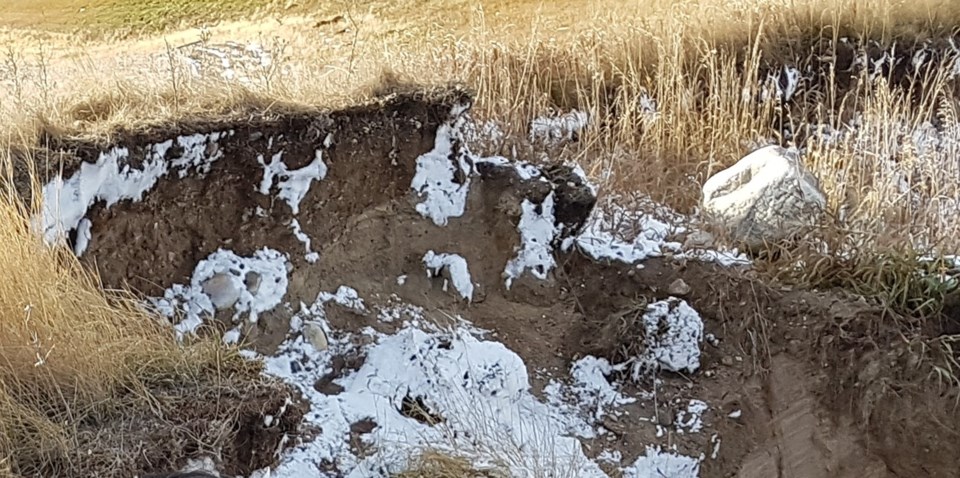Like plants, soil is essential to life as we know it. Soil protects the roots of plants, animals and microbes from freezing to death in the winter months. As the air above the soil cools 0 C, water that is contained in the topmost levels in the soils will also freeze. This is commonly known as the frost layer and sometimes that layer can be several feet deep, depending on many factors that influence this layer. However, it is important to remember the soil itself does not freeze, but the moisture within the soil is what freezes. If the soil is dry and does not contain any moisture, then the soil does not freeze but does get cold and crumbly. When the soil is dry, the frost level will go deeper, thus the reasoning behind watering in trees, shrubs and perennials in late fall prior to freeze up as it keeps the soil at a more constant temperature and does not allow the cold air to penetrate so deeply.
Approximately 58 per cent of the land in the Northern Hemisphere freezes seasonally. Permafrost exists where the ground stays at or below 0 C for at least a two-year period. As you go deeper into the centre of the Earth the temperature of the matter increases. On a cold winter day, the outside temperature could be - 30 C but 10 feet down in the soil it is most likely a balmy 10 C. As we delve deeper into the core of the Earth, the temperatures become even hotter. Remembering science class, the Earth is composed of four layers – three are solid and one is liquid consisting of molten metal almost as hot as the sun.
Also important to remember is that if we have a thick layer of organic mulch on the soil surface or we are fortunate enough to get an early snowfall, this “blanket” will insulate the soil. Also, soils that are high in organic matter will help to hold the heat in the ground during the growing season. Yes, just another reason to keep your soils healthy by incorporating large amounts of organic matter into any garden areas.
So, now we understand a bit more about what is happening within our soils in winter, but the best facts are about to be revealed. For beneath the snow and the frost layer, there is a rich soil web still living and working and dreaming of spring. There is an incredible diversity of organisms that make up this soil food web, ranging from the tiniest one-celled bacteria, algae, fungi and protozoa to much more complex nematodes, micro-arthropods, and upwards to the earthworms we can see with our naked eye and insects, small vertebrates and plants. Together all these organisms eat, grow and move throughout the soil making it possible for us to have clean water, clean air and healthy plants.
These organisms decompose organic compounds like manure, plant residues and pesticides preventing them from entering the water and becoming pollutants. They sequester nitrogen within the soil, and fix nitrogen from the air making this nutrient available to plants. They also enhance soil aggregation and porosity and some even become food for critters above ground and higher up in the food chain. As the weather warms this powerhouse of soil life surges back to work providing us with life as we know it.
When we remember the importance of life deep in the soil, we also remember how important it is for us as gardeners to consistently build healthy soils and to complete our fall work in the garden so life can continue throughout the winter when the garden rests.
Next week we will learn more about what makes up this amazing soil food web and learn how plants and critters are able to survive the deep freeze of winter. Enjoy the photo taken by Heather Richardson who was teaching a soils lab to some post-secondary horticulture students.
Hanbidge is the lead horticulturist with Orchid Horticulture. Find us at www.orchidhort.com; by email at [email protected]; on facebook @orchidhort and on instagram at #orchidhort.
Tune into GROW Live, weekly on our Facebook page https://www.facebook.com/orchidhort or check out the Youtube channel GROW https://www.youtube.com/channel/UCzkiUpkvyv2e2HCQlFl0JyQ?





